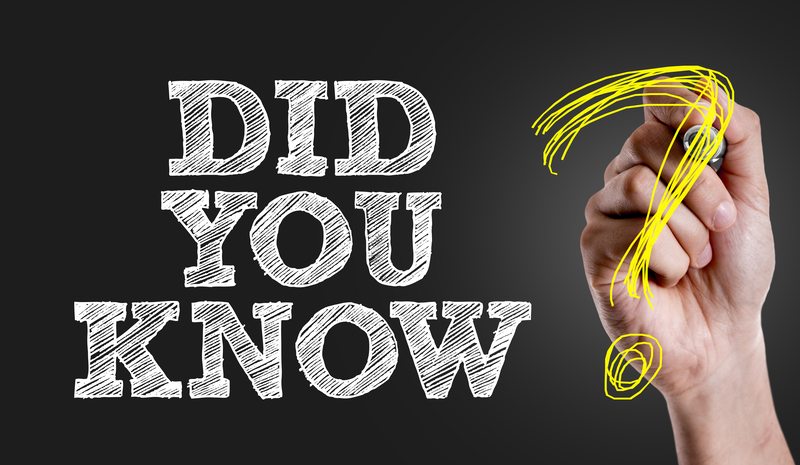Safety Concerns: Why Moving a Piano Isn't a Solo Project
Posted on 18/06/2025
Safety Concerns: Why Moving a Piano Isn't a Solo Project
Moving a piano is a task that might seem manageable, especially if you are familiar with moving heavy furniture. However, attempting to move a piano alone can lead to serious injury, damage, and costly repairs. This article will outline the safety risks associated with solo piano relocation, elaborate on best practices, and explain why hiring professional piano movers is always advisable.
Understanding the Weight and Build of a Piano
Pianos are unique instruments, both in their exquisite musical abilities and their construction. They are heavier and more complex than most household items.
Why Are Pianos So Heavy?
The construction of a piano includes hundreds of moving parts, a cast-iron plate, hardwood framework, and, in many cases, an intricate soundboard. Upright pianos typically weigh between 300 to 500 pounds, while grand pianos can easily exceed 1,000 pounds. Their weight distribution is often uneven, adding another layer of complexity when lifting, tilting, or transporting.
- Grand pianos: Can weigh as much as a small car in some cases.
- Upright pianos: Still heavier than most appliances or furniture.
These factors make moving a piano alone not only difficult but extremely dangerous.

Risks Associated With Solo Piano Moving
Personal Injury
The most significant safety concern during a solo piano move is the risk of injury. Improper lifting techniques, inadequate equipment, and insufficient manpower can result in:
- Back injuries
- Crushed fingers or toes
- Muscle strains and sprains
- Slips and falls on stairs
- Broken bones in extreme cases
Injuries while moving a piano by yourself can be severe and might require emergency medical attention.
Piano Damage
Beyond personal harm, pianos are sensitive to impact, jarring, or tilting. Components such as legs, pedals, or the lid are fragile and prone to breakage.
- Soundboard cracks
- Broken keys
- Internal mechanism damage
- Cosmetic scratches, dents, and chips
Repairs for a damaged piano are often expensive and sometimes irreversible. Avoiding damage during transportation requires skill and special equipment.
Property Damage
Walls, floors, and door frames are common victims of an attempted DIY piano move. Due to the weight and size of a piano, a single misstep can easily result in:
- Gouged walls or banisters
- Scratched or torn flooring
- Broken tiles or cracked concrete on driveways
- Damaged stairs or railings
These repairs can quickly add to the overall cost, potentially outweighing the savings of avoiding professional services.
Why Is Piano Moving Different From Regular Furniture?
Unusual Weight Distribution and Shape
Unlike a dresser or bed, a piano's weight isn't evenly balanced. In upright models, most mass sits at the back. In grands, the cast-iron plate is concentrated towards one side. This unbalanced design can catch even experienced movers off-guard, increasing the risk of tipping.
Complex Disassembly
While some furniture comes apart easily, pianos require specialist tools and knowledge for partial disassembly. Removing legs, pedals, or castors incorrectly can cause significant structural harm.
Precision Handling Required
For a piano to sound and play correctly after a relocation, it must be kept level and protected from jarring movements. Even modest bumps or exposures to temperature changes can cause internal components to shift or crack, impacting the instrument's sound quality.
Essential Tools Necessary for Piano Moving
Moving a piano safely requires specialized equipment that most homeowners do not own:
- Piano Dolly: Supports the instrument's weight and provides mobility.
- Furniture Straps: Distributes weight across the movers' bodies, making lifting safer.
- Piano Board (or skid board): For grand pianos, this supports the body during transport.
- Padding and Blankets: Prevents scratches and absorbs shock.
- Ramps: Essential for stairs or uneven surfaces.
- Heavy-Duty Gloves: Improves grip and protects fingers.
Attempting to move a piano without these tools makes the process more dangerous and increases the likelihood of damage.
Why You Should Hire Professional Piano Movers
Expertise matters when it comes to the safe transportation of a piano. Here's why trained piano moving teams are invaluable:
Experience and Training
Professional piano movers receive specialized training in safe lifting, maneuvering, and securing the instrument. They instinctively know how to navigate corner turns, stairs, and tight spaces.
Team Coordination
A solo move lacks the collaborative strength that movers bring. With a coordinated team, each person has a role--balancing, lifting, guiding, or securing the piano. Communication and teamwork ensure smooth, safe relocation.
Proper Equipment
Most reputable piano movers come equipped with all necessary gear, ensuring both protection of the piano and the property. The use of professional tools greatly reduces the risk of injury or damage.
Liability and Insurance
Trusted moving companies carry insurance to cover accidental damage to the instrument and your home. In case of an unfortunate event, you are protected from costly out-of-pocket expenses--something you forfeit with a solo or amateur move.
Common Mistakes When Attempting DIY Piano Moves
- Underestimating the Weight: Many believe a few friends can handle a piano, only to discover it's too heavy.
- Improper Lifting Techniques: Bending and lifting incorrectly can cause back injuries and accidents.
- Inadequate Path Planning: Failing to measure entrances or clear hallways may result in getting stuck or damaging walls.
- Ignoring Equipment Needs: Using makeshift boards or dollies can snap under pressure, risking damage.
- Rushing the Move: Trying to move too quickly increases the likelihood of dropped or overturned pianos.
- Neglecting Safety Precautions: Forgetting gloves, proper shoes, or secure grips puts everyone at risk.
Step-by-Step: How Professionals Move a Piano Safely
- Planning: The route is mapped out, measurements are taken, and all obstacles are cleared.
- Preparation: The piano is prepped with blankets and padding, and detachable parts are safely removed.
- Lifting and Loading: Using straps and a team approach, the piano is lifted onto a dolly or board without tipping or jarring.
- Navigation: Professionals slowly maneuver through doorways, stairs, and tight spaces, always coordinating steps.
- Securing in Transit: Inside the truck, the piano is strapped down firmly to prevent any movement during transport.
- Unloading and Placement: Restoration at the destination is also meticulous, ensuring no harm comes to the instrument or new location.
This methodical approach highlights why piano moving is far from a one-person task!
Frequently Asked Questions About Piano Moving Safety
Can You Move a Piano With Only Two People?
Even with two strong adults, the risk of tipping, injury, or loss of balance is very high. It is strongly recommended to have at least three to four trained helpers--or better yet, certified piano movers.
Is It Cheaper to Move a Piano Yourself?
While you may save money upfront, the risks outweigh the benefits. Medical bills, home repairs, and piano restoration costs can far surpass the price of hiring professionals in the first place.
What's the Most Dangerous Step in Piano Moving?
Navigating stairs and tight corners. Even a small misstep can cause a piano to slip, fall, or become wedged, causing extensive injury or damage.

Additional Tips for Safe Piano Moving
- Never attempt to move a grand piano alone; their shape and weight make solo moves extremely unsafe.
- Protect floors and walls with padding or boards during all phases of the move.
- Keep children and pets away from the moving route for everyone's safety.
- Check your insurance policy before the move to ensure coverage of both the piano and property.
Conclusion: Moving a Piano Is Never a One-Person Job
The combination of overwhelming weight, awkward dimensions, delicate construction, and safety hazards means that moving a piano is not a solo project. Protect yourself, your property, and your musical investment--always use professionals for piano transport. Taking shortcuts with piano moving can lead to disaster, turning a cherished instrument into a costly liability. Choose wisely, and move your piano the safe, proven way.
```


